Identification of Aquatic Organisms Using a Magneto-Optical Element
Abstract
:1. Introduction
2. Materials and Methods
2.1. Magneto-Optical Sensor
2.2. Identification Method
3. Results
3.1. Creating Micromagnetic Tags
3.2. Magnetic Field Conditions
3.3. Sensing Distance Measurements
3.4. FEM Analysis
4. Discussion
5. Conclusions
Author Contributions
Funding
Conflicts of Interest
References
- Ahrens, E.T.; Zhong, J. In vivo MRI cell tracking using perfluorocarbon probes and fluorine---19 detection. NMR Biomed. 2013, 26, 860–871. [Google Scholar] [CrossRef] [PubMed]
- Meijering, E.; Dzyubachyk, O.; Smal, I. Methods for Cell and Particle Tracking. Methods Enzymol. 2012, 504, 183–200. [Google Scholar] [CrossRef] [PubMed]
- Daldrup-Link, H.E.; Rudelius, M.; Metz, S.; Piontek, G.; Pichler, B.; Settles, M.; Heinzmann, U.; Schlegel, J.; Oostendorp, R.A.; Rummeny, E.J. Cell tracking with gadophrin-2: A bifunctional contrast agent for MR imaging, optical imaging, and fluorescence microscopy. Eur. J. Nucl. Med. Mol. Imaging 2004, 31, 1312–1321. [Google Scholar] [CrossRef] [PubMed]
- Pontual, M.; Bertignac, M.; Battaglia, A.; Bavouzet, G.; Moguedet, P.; Groisonm, A.L. A pilot tagging experiment on European hake: Methodology and preliminary results. ICES J. Mar. Sci. 2003, 60, 1318–1327. [Google Scholar] [CrossRef]
- Chuang, J.C.; Hu, Y.C.; Ko, H.J. A Novel Secret Sharing Technique Using QR Code. Int. J. Image Process. 2010, 4, 468–475. [Google Scholar]
- Marrocco, G. The art of UHF RFID antenna design: Impedance-matching and size-reduction techniques. IEEE Antennas Propag. Mag. 2008, 50, 66–79. [Google Scholar] [CrossRef]
- Nikitin, P.V.; Rao, K.V.S. Performance limitations of passive UHF RFID systems. In Proceedings of the 2006 IEEE Antennas and Propagation Society International Symposium, Albuquerque, NM, USA, 9–14 July 2006; pp. 1011–1014. [Google Scholar] [CrossRef]
- Hong, I.H.; Dang, J.F.; Tsai, Y.H.; Liu, C.S.; Lee, W.T.; Wang, M.L.; Cheng, P.C. An RFID application in the food supply chain: A case study of convenience stores in Taiwan. J. Food Eng. 2011, 106, 119–126. [Google Scholar] [CrossRef]
- Lunkenheimer, P.; Emmert, S.; Gulich, R.; Kohler, M.; Wolf, M.; Schwab, M.; Loidl, A. Electromagnetic-radiation absorption by water. Phys. Rev. E 2017, 96, 062607. [Google Scholar] [CrossRef] [PubMed] [Green Version]
- Hill, R.B. Retina Identification. In Biometrics: Personal Identification in Networked Society; Jain, A.K., Bolle, R., Pankant, S., Eds.; Springer Science & Business Media: Berlin, Germany, 2006; pp. 123–125. ISBN 0306470446. [Google Scholar]
- Matveev, I.; Simonenko, I. Detecting precise iris boundaries by circular shortest path method. Pattern Recognit. Image Anal. 2014, 24, 304–309. [Google Scholar] [CrossRef]
- Komarinski, P. Automated Fingerprint Identification Systems (AFIS); Academic Press: Cambridge, MA, USA, 2004; pp. 2–13. ISBN 9780080475981. [Google Scholar]
- Minkov, D.; Takeda, Y.; Shoji, T.; Lee, J. Estimating the sizes of surface cracks based on Hall element measurements of the leakage magnetic field and a dipole model of a crack. Appl. Phys. A 2002, 74, 365–368. [Google Scholar] [CrossRef]
- Jeffrey, M. Progress in magnetic domain observation by advanced magneto-optical microscopy. J. Phys. D Appl. Phys. 2015, 1–44. [Google Scholar] [CrossRef]
- Rohrmann, H.; Hoffmann, H. High-resolution kerr observation of magnetic domains. Thin Solid Films 1989, 175, 273–293. [Google Scholar] [CrossRef]
- Tehranchi, M.M.; Hamidi, S.M.; Eftekhari, H.; Karbaschi, M.; Ranjbaran, M. The inspection of magnetic flux leakage from metal surface cracks by magneto-optical sensors. Sens. Actuators A 2011, 172, 365–368. [Google Scholar] [CrossRef]
- Deeter, M.N.; Rose, A.H.; Day, G.W. Fast, Sensitive Magnetic-Field Sensors Based on the Faraday Effect in YIG. J. Lightwave Technol. 1990, 8, 1838–1842. [Google Scholar] [CrossRef]
- Atoneche, F.; Kalashnikova, A.M.; Kimel, A.V.; Stupakiewicz, A.; Maziewski, A.; Kirilyuk, A.; Rasing, T. Large ultrafast photoinduced magnetic anisotropy in a cobalt-substituted yttrium iron garnet. Phys. Rev. B 2010, 81, 214440. [Google Scholar] [CrossRef]
- Hartmut, G.; Klaus, Z.; Gerhard, S. Mechanical Properties of the Skin of Xenopus laevis. J. Morphol. 1995, 15–22. [Google Scholar] [CrossRef]
- Hurd, C.M. The magnetic susceptibility of silver and gold in the range 6–300°K. J. Phys. Chem. Solids 1966, 27, 1371–1374. [Google Scholar] [CrossRef]
- Christofi, A.; Kawaguchi, Y.; Alù, A.; Khanikaev, A. Giant enhancement of Faraday rotation due to electromagnetically induced transparency in all-dielectric magneto-optical metasurfaces. Opt. Lett. 2018, 43, 1838–1841. [Google Scholar] [CrossRef] [PubMed]

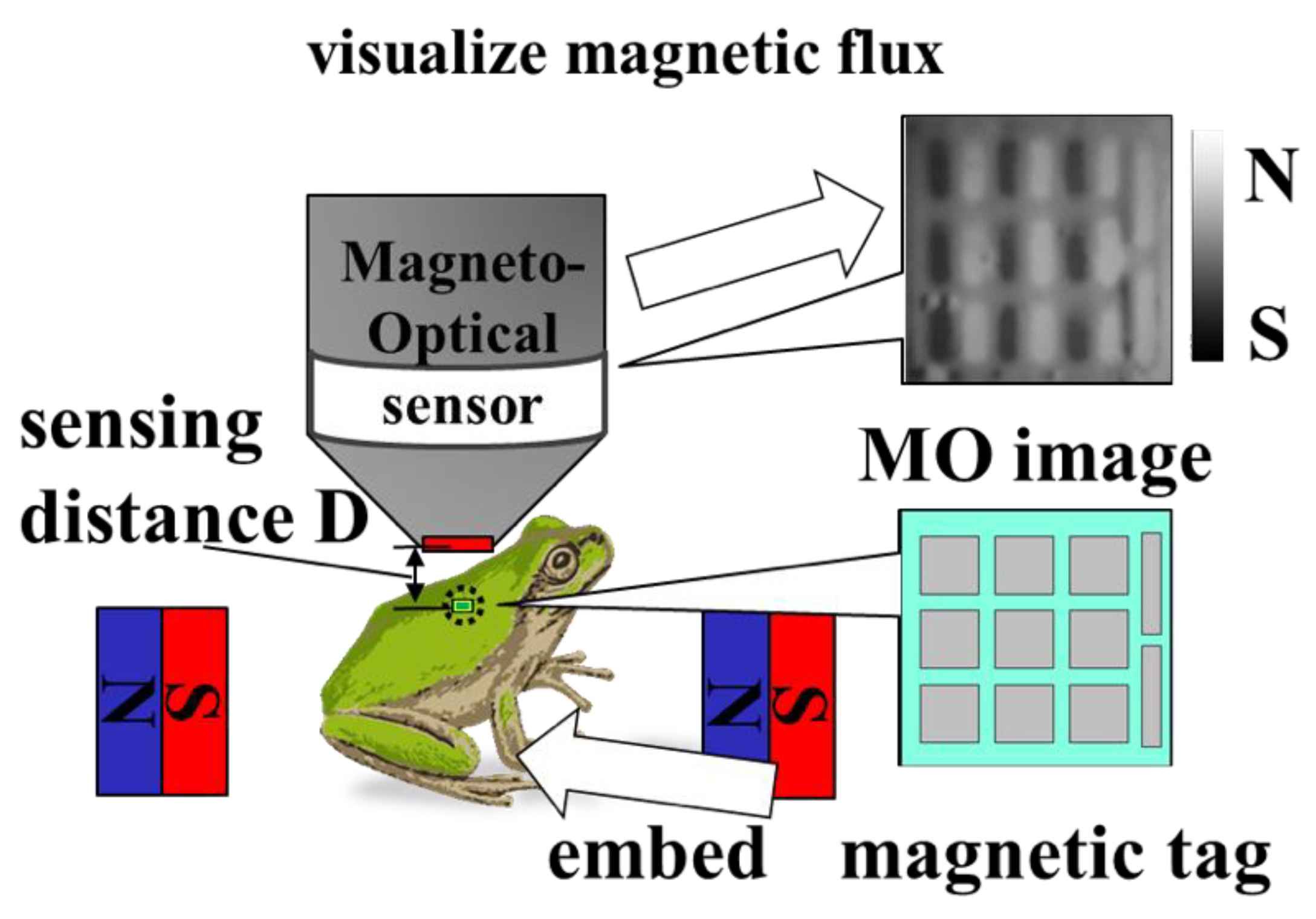


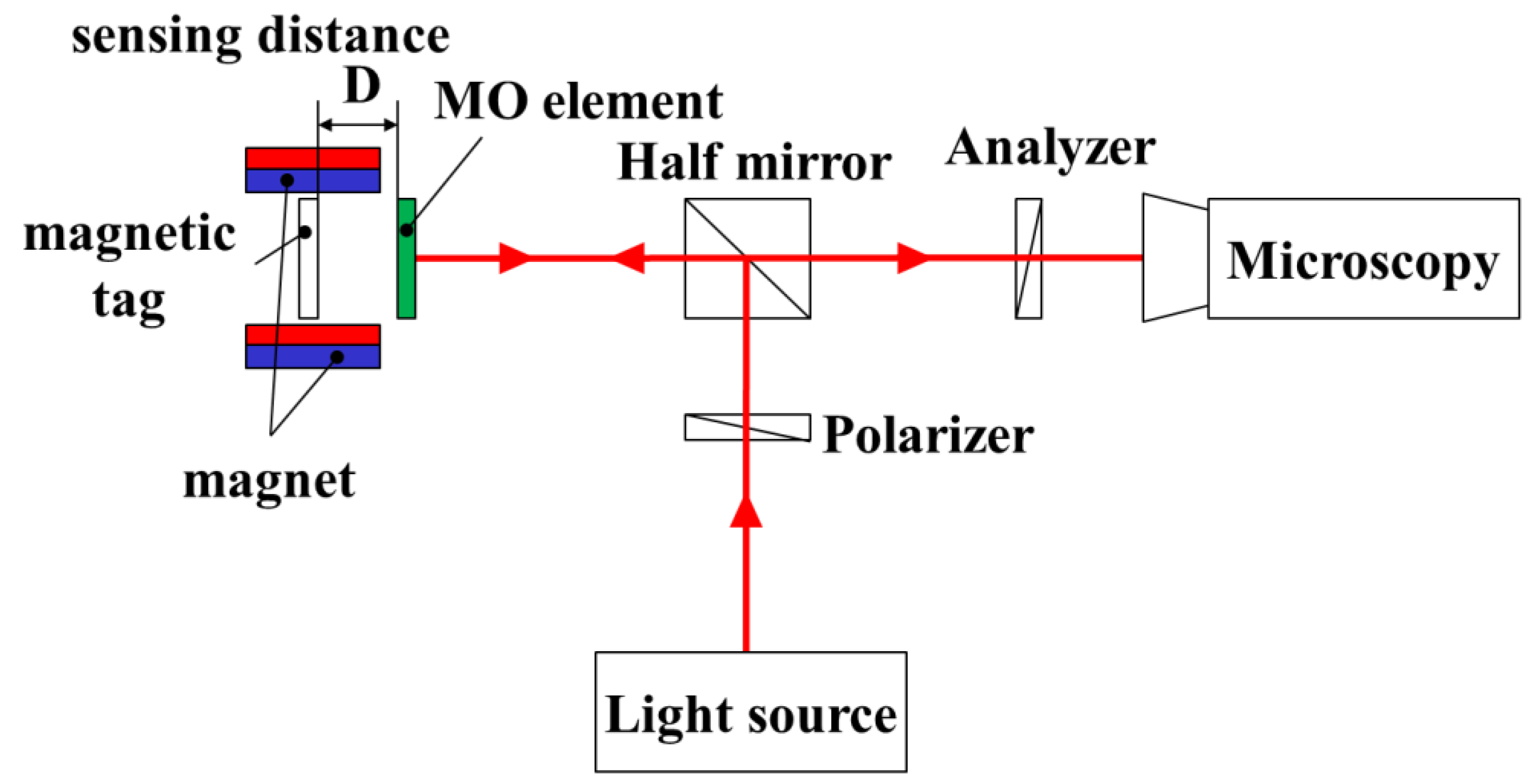
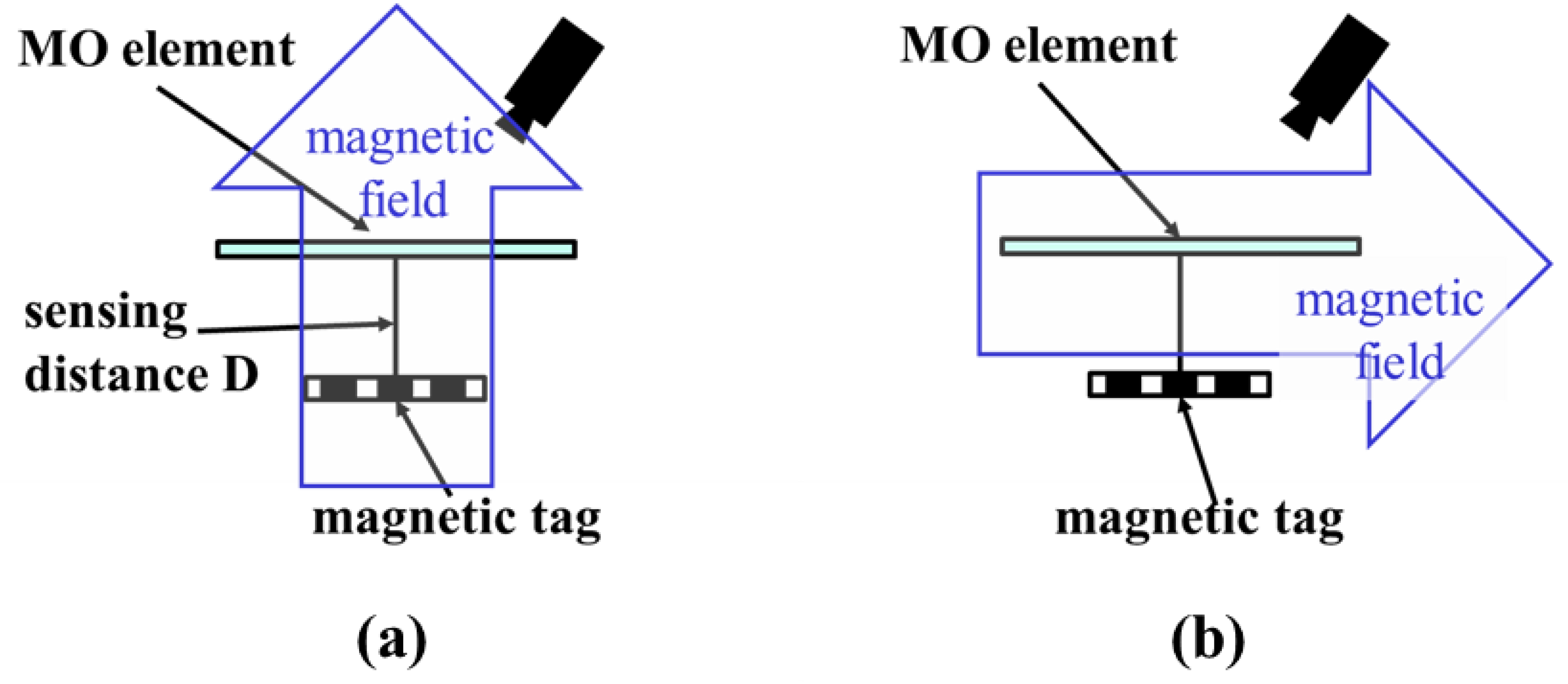

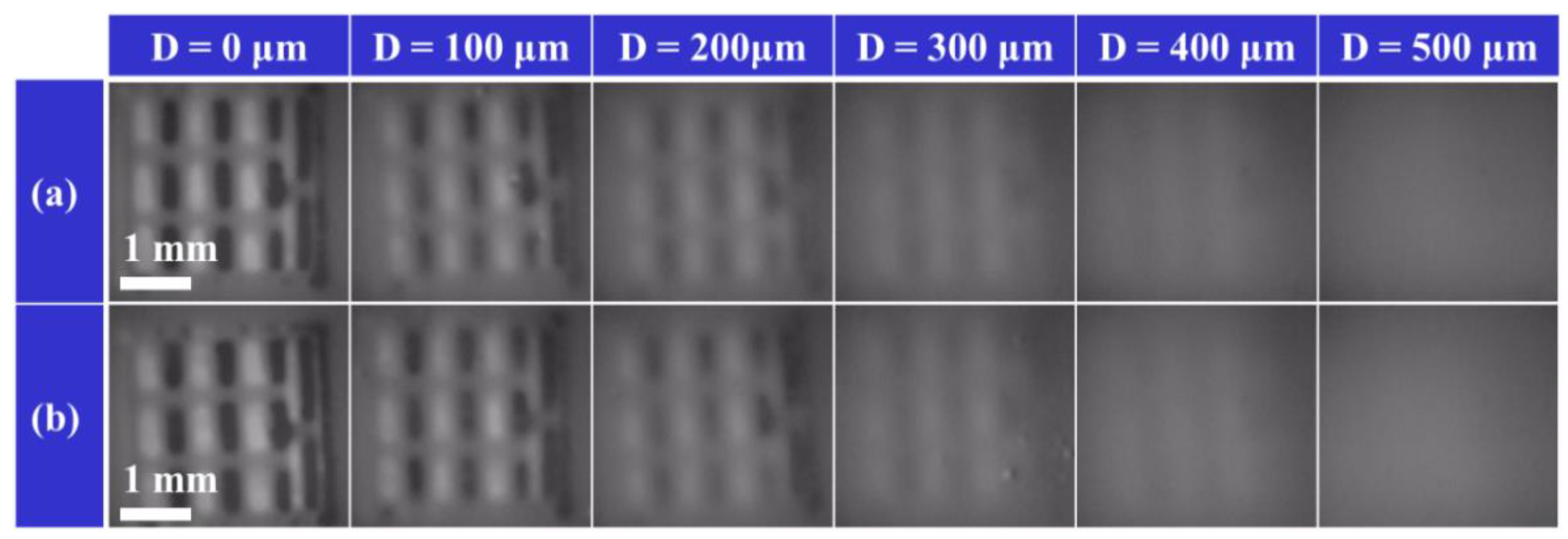
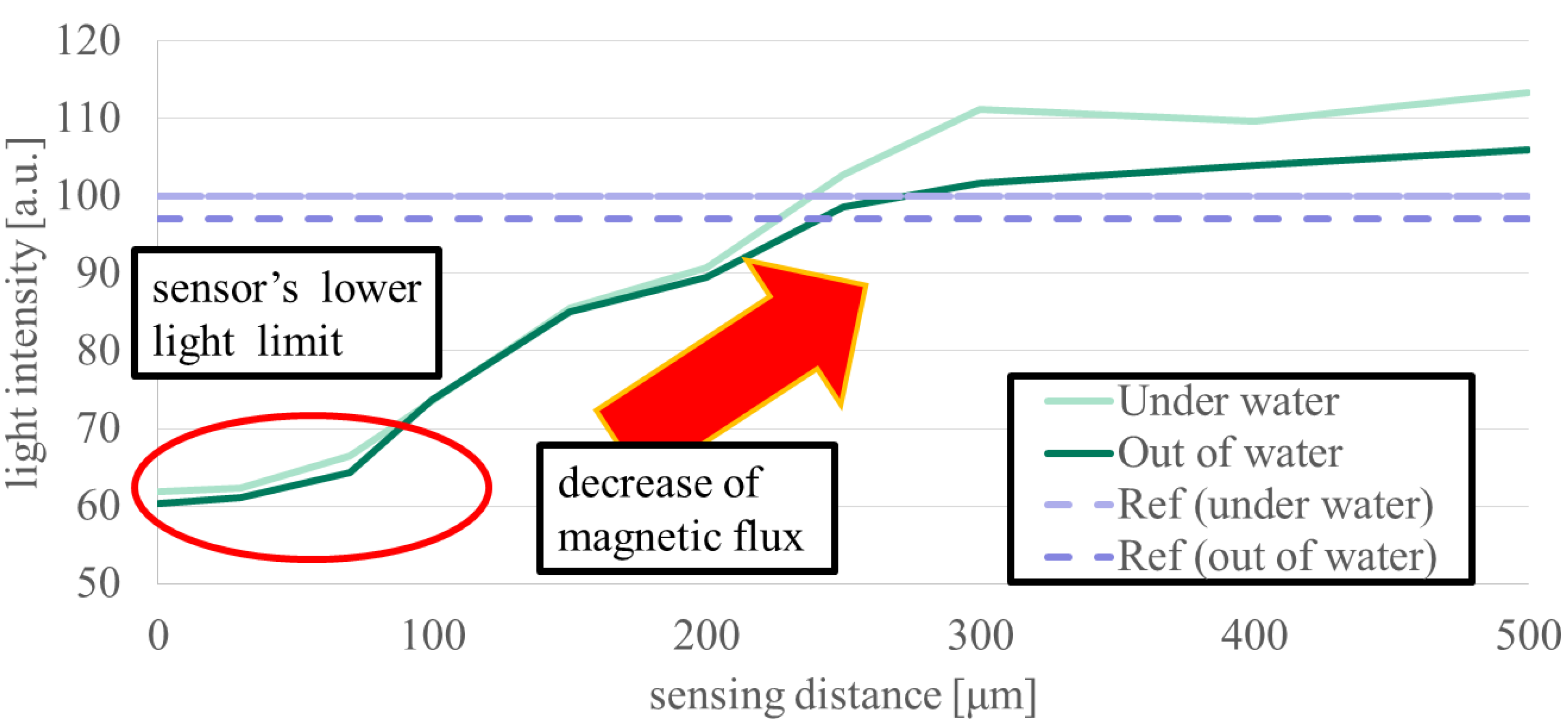

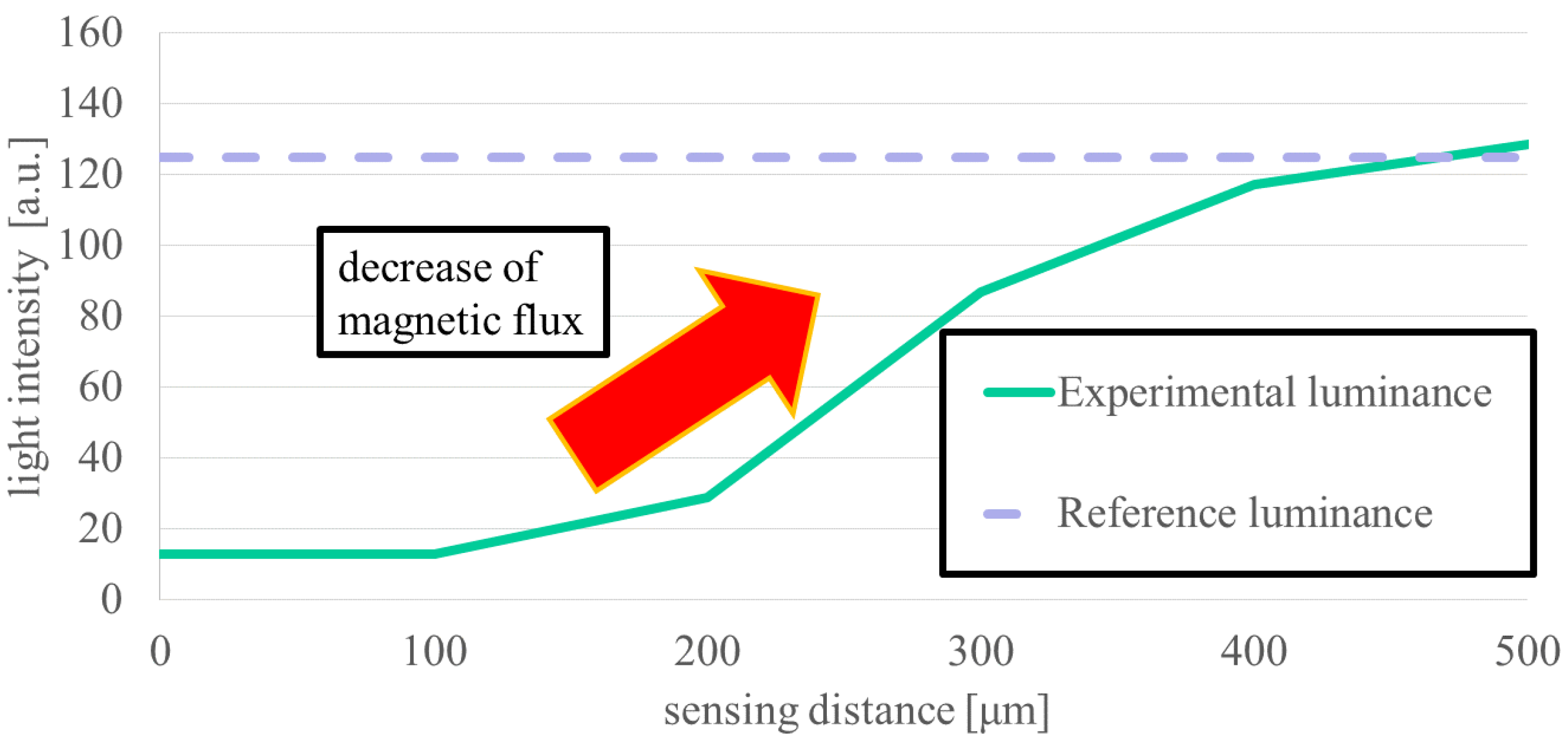
| Term | Specification |
|---|---|
| Sensor specification | Mag-view, type-A |
| Element resolution | 25 [µm] |
| Camera resolution | 5M [px] |
| Measuring range | ±2 [mT] |
| Field of view | 0.8 x 0.8 [mm] |
| Frame rate | Up to 30 [fps] |
| Size | dia.3 x 11 [cm] |
| Term | Specification |
|---|---|
| Brightness | 128 |
| Contrast | 16 |
| Hue | 0 |
| White balance | 0 |
| Saturation | 16 |
| Sharpness | 1 |
| Gamma | 64 |
| Others | monochrome |
© 2019 by the authors. Licensee MDPI, Basel, Switzerland. This article is an open access article distributed under the terms and conditions of the Creative Commons Attribution (CC BY) license (http://creativecommons.org/licenses/by/4.0/).
Share and Cite
Oguma, K.; Sato, T.; Kawahara, T.; Haramoto, Y.; Yamanishi, Y. Identification of Aquatic Organisms Using a Magneto-Optical Element. Sensors 2019, 19, 3254. https://doi.org/10.3390/s19153254
Oguma K, Sato T, Kawahara T, Haramoto Y, Yamanishi Y. Identification of Aquatic Organisms Using a Magneto-Optical Element. Sensors. 2019; 19(15):3254. https://doi.org/10.3390/s19153254
Chicago/Turabian StyleOguma, Kohei, Tasuku Sato, Tomohiro Kawahara, Yoshikazu Haramoto, and Yoko Yamanishi. 2019. "Identification of Aquatic Organisms Using a Magneto-Optical Element" Sensors 19, no. 15: 3254. https://doi.org/10.3390/s19153254





